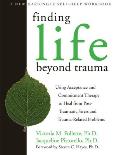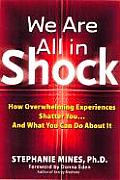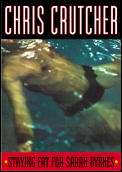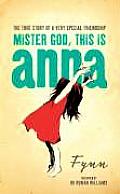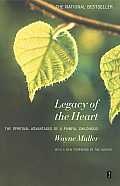
Subtitle: Therapy for Child Abuse Survivors in Family and Social Context
Recommended to me by: Dr. Kathleen Young
This is an academic book, written in precise psychological language, containing enough material for a semester course. Startlingly compassionate insights into complex trauma and prolonged childhood abuse (abbreviated PCA) are built into a treatment model that focuses on the family context rather than individual traumatic events. It is evidence-based, building the case for its treatment model with a thorough survey of existing research. This is a profoundly respectful book, well worth the effort of reading it.
Part 1
The first section distinguishes prolonged childhood abuse from single-incident adult trauma. An abused child in an “ineffective family” is focused on survival and misses out on learning skills for effective living, as well as missing the love needed to thrive.
A quote from a research paper:
“Some of the most painful stories I have heard – from survivors of even the most brutal and unremitting sexual abuse in childhood, as well as people who have had the good luck not to have been subjected to this kind of horror as children – had to do with other ways in which they were not heard, seen, respected, or loved….children who lived in a home that looked OK, with parents who seemed OK and had a life that appeared fine and even privileged, but who never felt special, never felt cherished, never in their whole lives ran in the door knowing someone was waiting there who thought they were the most wonderful precious child in the world.” [Rivera, 1996]
“People who grow up abused, neglected, disregarded and abandoned as children are as adults at extreme risk for continued invalidation and mistreatment by society at large.” This is not only because of individual missing skills, but because of a cascade of consequences making people more vulnerable to revictimization.
“Paradoxically, our society’s emphasis on self-reliance, coupled with the propagation of inequities based on gender, ethnic background, financial status, and other social classifications, converge to restrict the access of already deprived and maltreated individuals to resources that would help them attain effective self-sufficient functioning.”
“The overriding objective of this form of treatment is teaching clients adaptive living skills for moderating distress and enhancing daily functioning.”
Part 2
The second section describes forming a collaborative therapeutic alliance and is full of insights I haven’t seen elsewhere. People who were extensively abused as children expect disdain and abandonment. Many survivors interpret questions as commands, and comply with the therapist’s implicit expectations of them to avoid conflict. There is both intense longing for connection and extreme guardedness born of painful experience.
“What these clients need is to be treated not as helpless children, but as adults who by surviving extraordinarily adverse circumstances, have already demonstrated the potential to endure the stresses and challenges of daily living. […] Recognition, acceptance, and validation of survivors’ feelings, experiences, and longings is a helpful and essential aspect of treatment.”
“[R]emember that actions speak louder than words, and that subtle, guileless, spontaneous responses that implicitly communicate respect and regard for the personhood of the client speak the loudest of all.”
“[E]xploration of experience of child abuse in PCA survivors is most likely to be productive when it occurs under the initiation, direction, and guidance of the client. This material is highly charged, and strongly associated with a sense of helplessness and being controlled. It is usually best to leave it up to the client to determine whether and when to acknowledge and address it.”
The distinction is made between helping someone recover from a traumatic event and reconnect with existing skills and resources, and helping someone recover from a traumatic childhood where those skills and resources were never acquired, and need to be learned as an adult.
Part 3
The third part gives prioritized goals for the treatment process and strategies for how to achieve them. The collaborative therapeutic alliance is still the highest priority.
The first goal is the ability to manage and modulate distress. Anxiety-reduction methods are introduced, and a practice schedule is set up so that the client can practice the skills when they’re not immediately necessary. One technique is inviting the client to remember or create a safe place, and return there in imagination to reduce stress. Activity routines to interrupt depression are also proposed.
Dissociation is also addressed. Disconnection from the present moment is distinguished from internal fragmentation.
This goal is focused on adaptive functioning, rather than on exploring or reducing dissociation for its own sake. Grounding techniques are covered to anchor the client in the here-and-now.
While it is known that extreme trauma leads to dissociation, it may be that lack of attunement with family members may predispose a child to dissociation. “In this type of interpersonal context, where the attributions and appraisals of a child made by the people closest to her or him vary wildly, more or less independently of the behavior displayed, it is easy to imagine that the experience and perception of self would be similarly confused, mercurial, and disjointed.”
“[T]his approach encourages the practitioner to recognize the importance of being able to maintain a cohesive perception of the survivor despite the client’s own subjective experience of being fractured.” For the client, internal cooperation rather than integration is the goal.
The next goal is learning to exercise critical thinking and judgment. The capricious abusive environment may not have taught reasoning skills, and the survivor learns negative and detrimental beliefs, supported by adverse experiences.
“Familial relationships characterized by neglect and emotional detachment, domination, and criticism, and erratic and unpredictable behavior powerfully instill convictions in the survivor that she or he is unworthy and inept, and that others are malicious and unreliable.”
“Just as the unassertiveness and emotional dependency engendered by the family context renders a child more susceptible to abuse, the exacerbation of these characteristics by explicit abuse magnifies survivors’ risk of being abandoned, taken advantage of, and re-victimized.”
“The survivor ends up being blamed for what is actually the failure of the family and society to adequately equip her or him with the resources required for effective functioning as an adult. It is as if someone has tied the laces of child’s two shoes together, and then, when she or he inevitably trips and falls, berates her or him for being clumsy.”
It’s a good thing I don’t highlight books, or this one would glow yellow on every page. I wish every practitioner working with traumatized people would read and absorb this book. I would love to take a seminar from Steven Gold!

